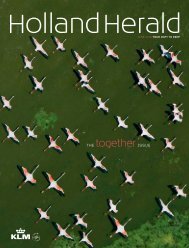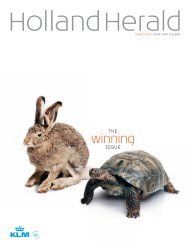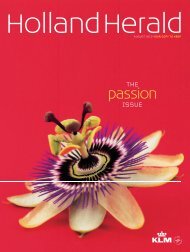january-2010
january-2010
january-2010
You also want an ePaper? Increase the reach of your titles
YUMPU automatically turns print PDFs into web optimized ePapers that Google loves.
TRAVEL CHINA<br />
tapestry of undulating meadows and hills is a pristine<br />
environment where Khampa horsemen once honed their<br />
fi ghting skills.<br />
“People usually end up staying in Tagong longer than they<br />
plan,” says Sally Norbu, Khampa co-owner of the perennially<br />
popular Sally’s Kham Restaurant. “We have a very vibrant and<br />
special community here.”<br />
The sprawling grasslands of Western Sichuan have long<br />
been associated with horses, both as beasts of burden and battle,<br />
and as commodities for bargaining. The tea caravans and<br />
warriors have long since disappeared, but the horse remains one<br />
of the best ways to get around, for locals and visitors.<br />
“For Khampa men, riding horses has always been a glorious<br />
thing,” explains Sally. “As they gallop across the grassland with<br />
the wind in their face, yelling at the tops of their voices,<br />
Khampas have a great sense of togetherness and honour. In<br />
Tagong we have a popular song that says: ‘A good steed is like a<br />
swift bird, a golden saddle is like its feathers. When the bird and<br />
its feathers are together, then the highlands are easily crossed.’<br />
Khampas don’t make so many great journeys as before, but<br />
there are plenty of horse festivals around here where the local<br />
men can prove their strength and ability.”<br />
One of Tagong’s most popular day trips is a cross-country<br />
horse ride. The trail wends its way through a carpet of grass<br />
52 Holland Herald WILD<br />
LEFT TO RIGHT:<br />
Colourful roadside<br />
scenery outside<br />
Kangding;<br />
A butterfly near<br />
Mount Mengding;<br />
A yak grazes in<br />
the shadow of<br />
Mount Haizi<br />
“One of the best things about riding round<br />
here is meeting the nomads”<br />
and vivid blue fl owers. Semi-wild horses roam free here, their<br />
bellies fat from grazing, while restless herds of yak search out<br />
the lushest pastures. Vultures soar effortlessly above, casting<br />
shadows over the picturesque topography.<br />
Most Khampa in Western Sichuan now live in wood or<br />
stone houses with brilliantly carved windows, eschewing the<br />
mud-brick dwellings and yak-hair tents of the past. Around<br />
Tagong, however, the nomadic way of life is still much in<br />
evidence, with sporadic groups of tents pitched under the big<br />
blue sky. Many are patrolled by huge mastiffs, the traditional<br />
guard dog of the grassland.<br />
“One of the best things about riding round here, apart<br />
from the scenery, is meeting the local nomads,” says Sally. “If<br />
you’re invited to join them don’t worry about the dogs, which<br />
are usually tied up. People on the grassland are very friendly.<br />
Even if they don’t have much they usually still offer visitors a<br />
cup of yak butter tea.”<br />
Today, Western Sichuan remains a land of great<br />
contrast. The terrain may be inhospitable, but the warmth<br />
of the local welcome is deep and sincere. Materially, they<br />
may be poor, but the Khampa inhabit a land rich in culture<br />
and endowed with great natural beauty. For a little less than<br />
all the tea in China, the walls of their fortress paradise are<br />
surely worth scaling.
















